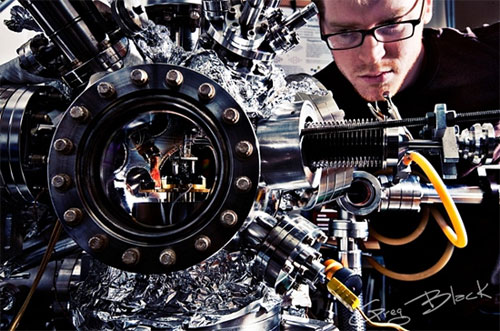| Sep 25, 2013 |
Sensor provides new approach to molecule detection on silicon surfaces
|
|
(Nanowerk News) Alastair McLean and Benedict Drevniok from the Department of Physics, Engineering Physics and Astronomy and their collaborators have found a way to “feel” the surface of silicon molecules at the molecular level.
|
|
This new “sense of touch” could mean a solution to the long-standing problem of producing clear images of silicon surfaces with a scanning tunnelling microscope (STM).
|
 |
| Benedict Drevniok worked with Alastair McLean to research how molecules attach to silicon surfaces.
|
|
Closely examining silicon surfaces has become increasingly important over the years as nearly all microelectronic devices, such as cell phones and laptops, are made from silicon-containing microchips.
|
|
“Our method provides information about how organic molecules attach to silicon surfaces,” says Dr. McLean. “Providing this information will assist researchers designing devices that exploit the rich properties for organic materials.”
|
|
While microelectronics are silicon-based, organic materials have a wide-range of physical properties that could be utilized in microelectronic devices.
|
|
Images from the STM are produced by passing tiny currents between a metal probe tip and a surface or molecule. It was previously difficult to get clear images of molecules on silicon surfaces because they can’t conduct electrical currents well.
|
|
McClean and Drevniok have mounted the tip used for STM onto a sharp tuning fork to create what they call a qPlus sensor that allows for the chance to “feel” the presence of molecules on the surface and to differentiate molecules from the similar-looking missing silicon atoms.
|
|
“The qPlus sensor gives us a sense of touch that we didn’t have before,” says Alastair McLean, professor in the Department of Physics, Engineering Physics and Astronomy. “This approach is analogous to feeling the presence of a piece of furniture in a dark room.
|
|
Using the sensor is a preferable method when it comes to viewing molecules on silicon surfaces as it is less invasive as there is a smaller chance of interfering with the surface molecules or moving them. The new method will simplify the research needed to develop the silicon-containing microchips needed for various micro-electronic devices.
|

